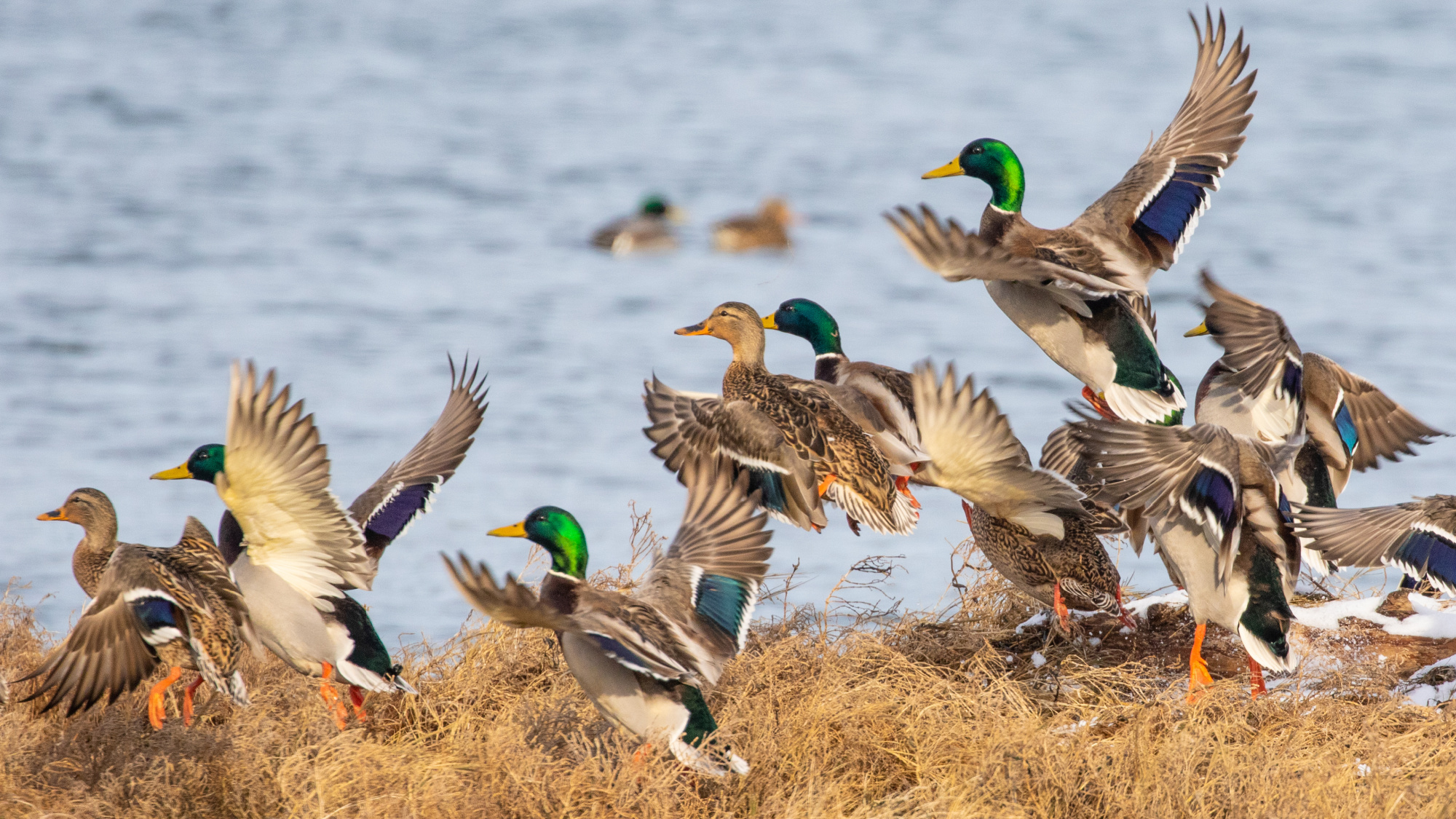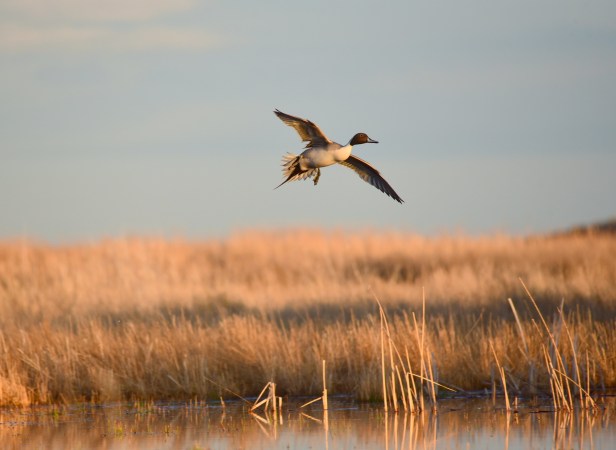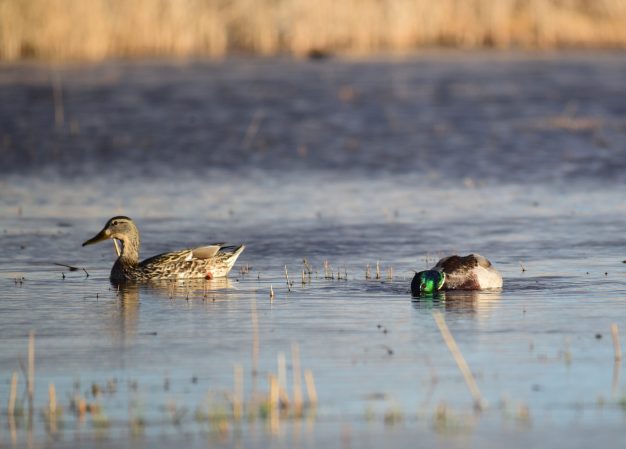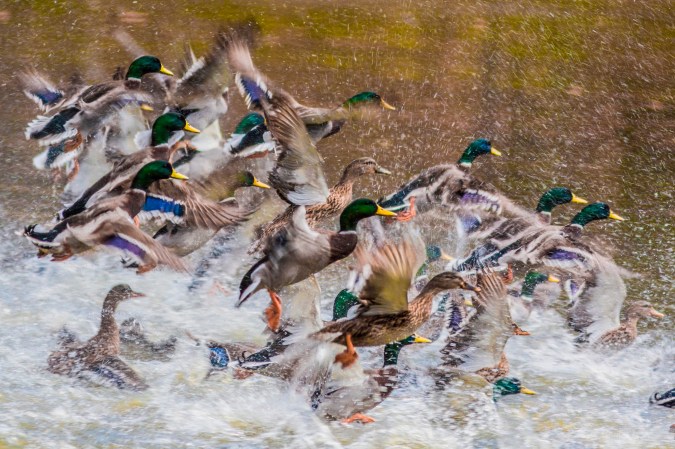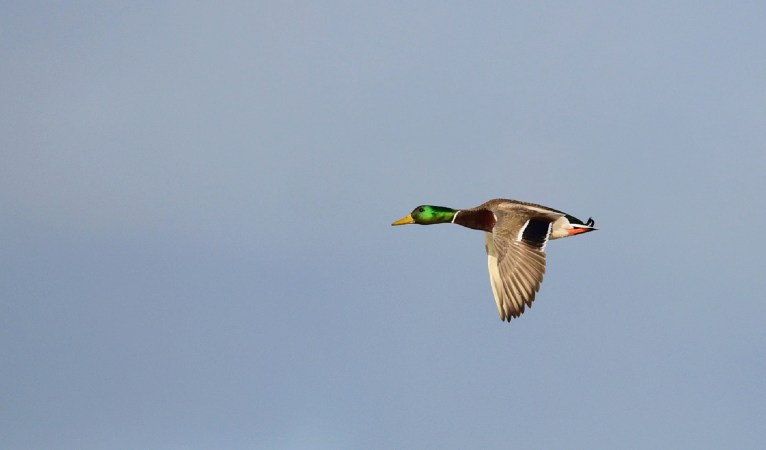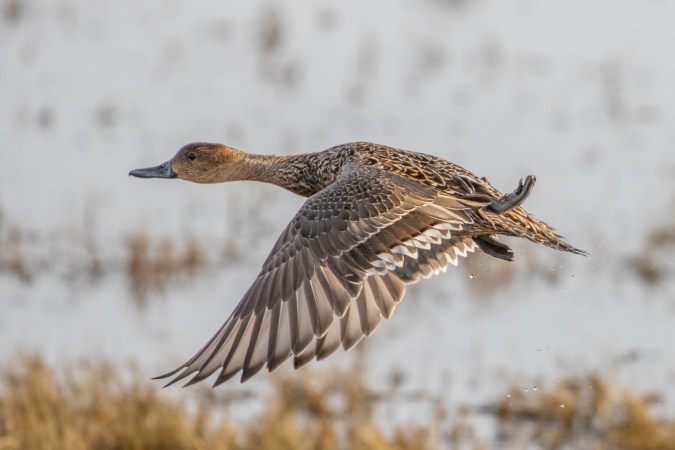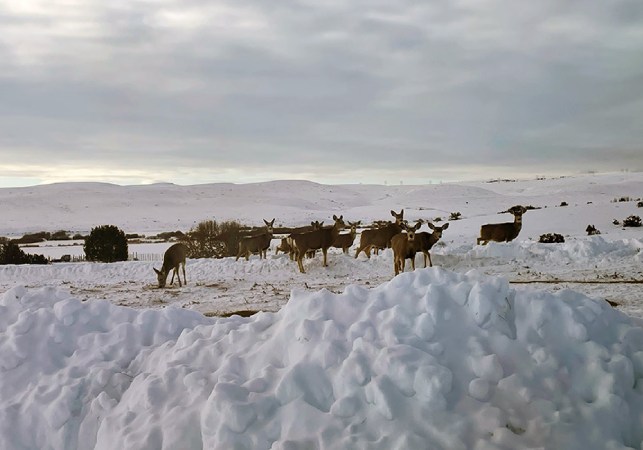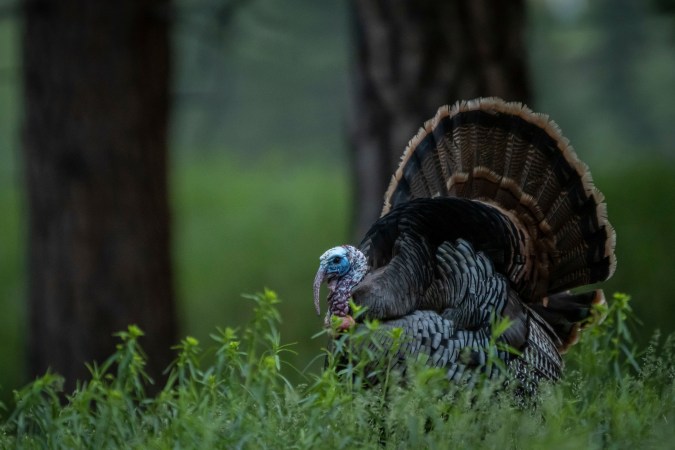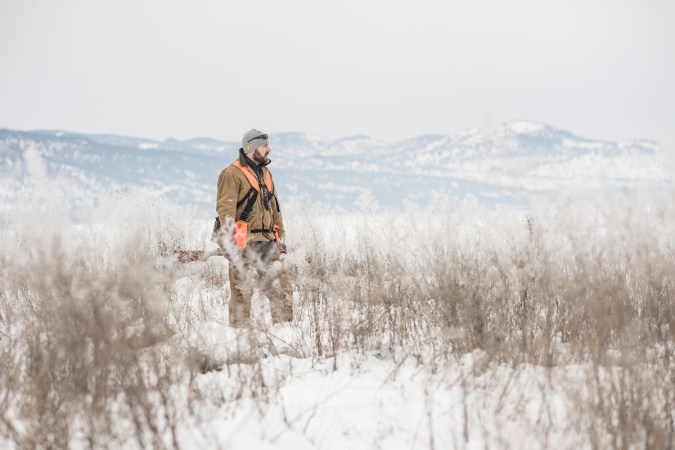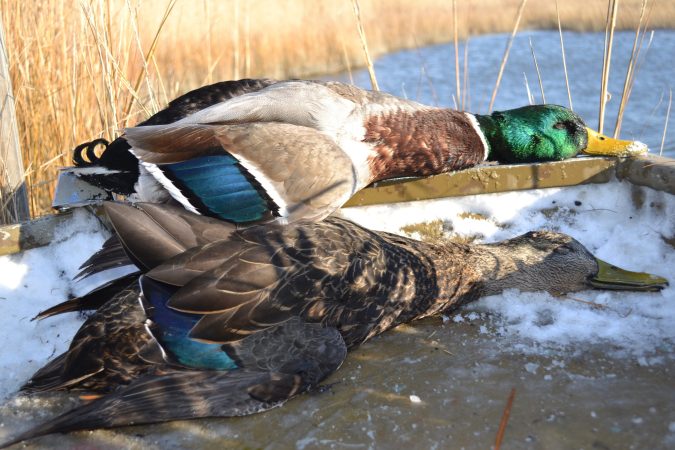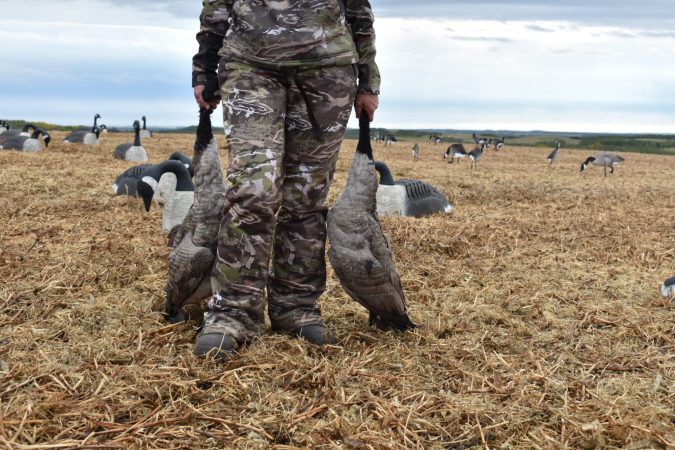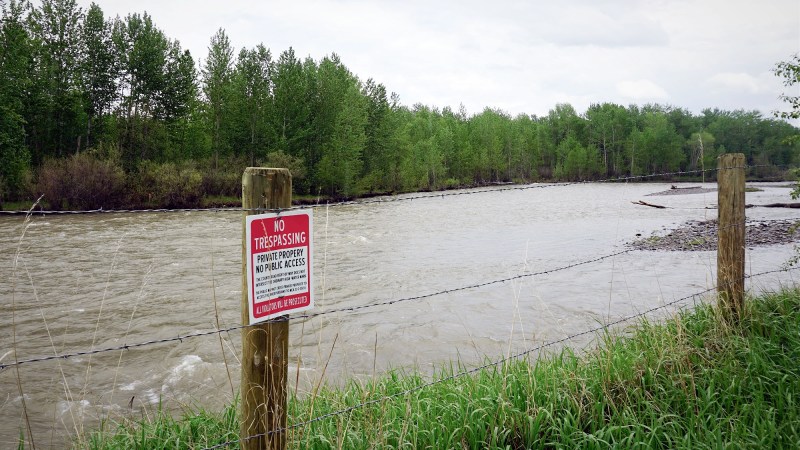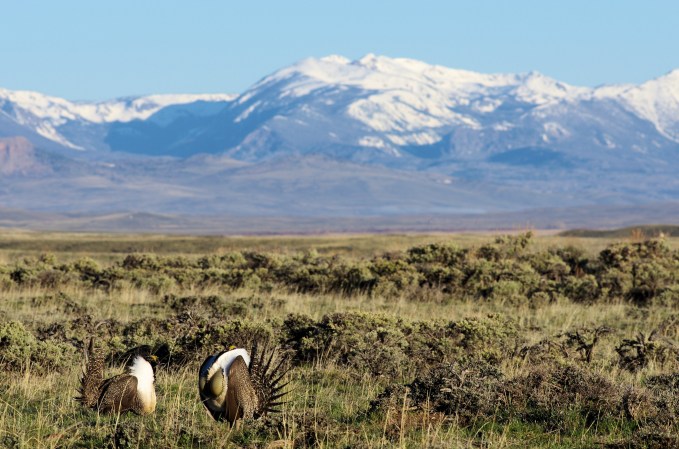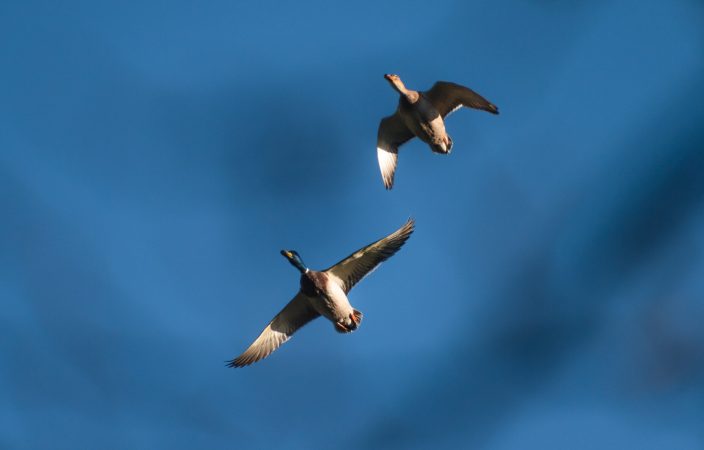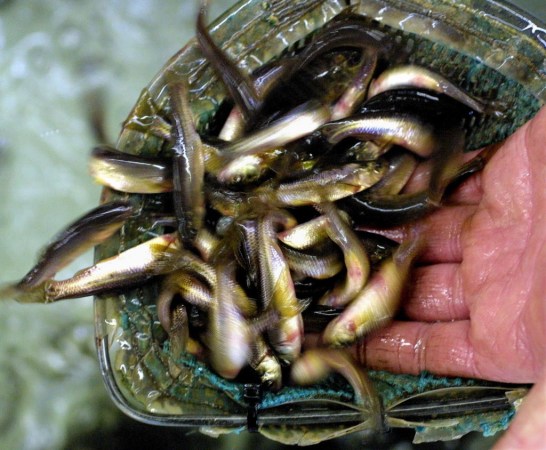Ducks Unlimited announced the results of the 2023 Waterfowl Population Survey on Friday, and the outlook was grimmer than scientists had hoped. The total count of 32.3 million ducks was down 7 percent from 2022, and 9 percent from the long-term average. While seven of the 10 species counted saw declines from 2022, six of the 10 species are still showing increases over their respective long-term averages, a sign that their numbers are still holding strong.
Unfortunately, some of the species that are facing long-term declines are also some of the most beloved by waterfowl hunters—namely mallards and pintails.
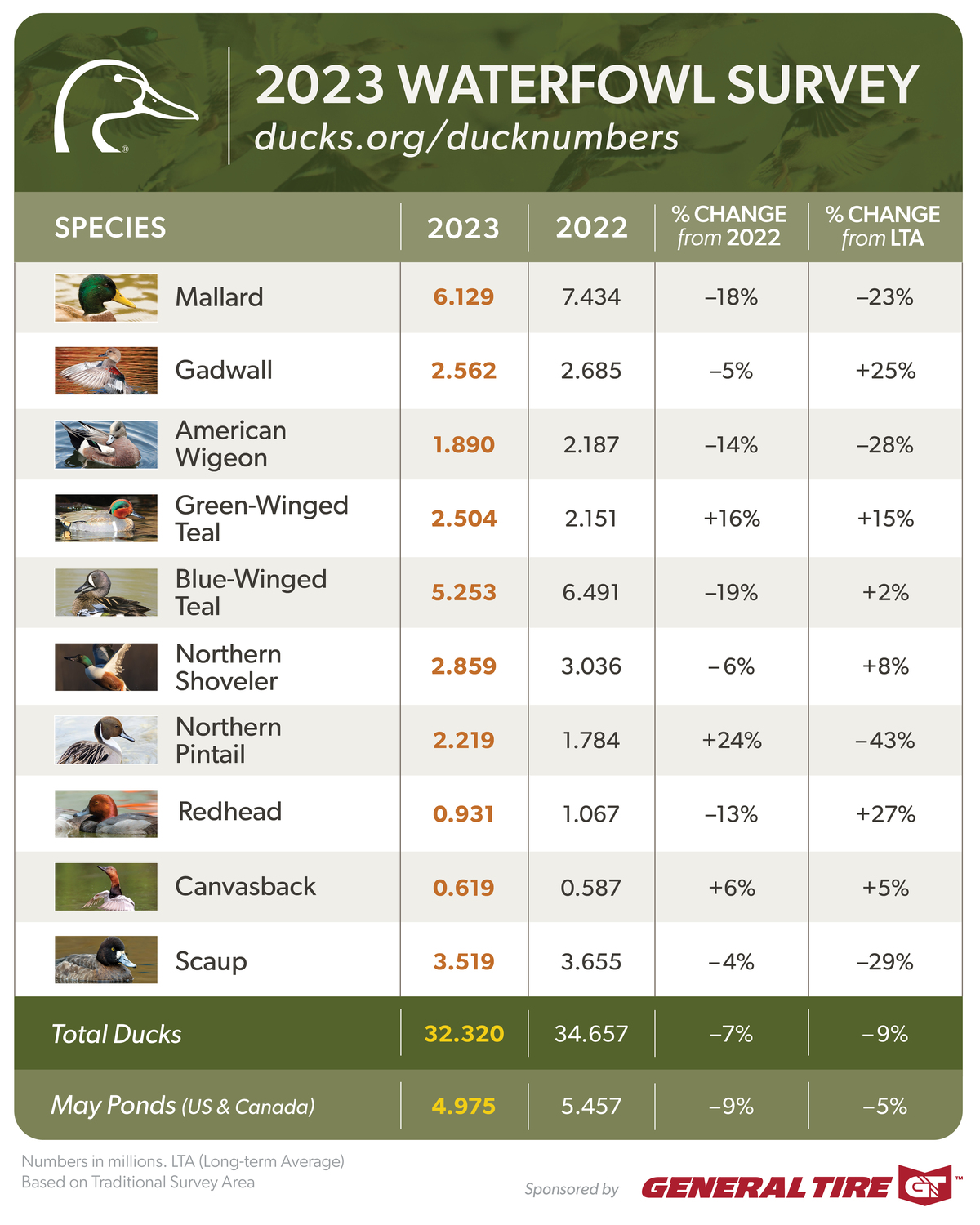
In 2022 pintail numbers hit a record low of fewer than 1.8 million birds. This year’s count was something to celebrate: an increase of 24 percent to 2.2 million birds. That’s encouraging, but this year’s pintail population still represents a 43 percent decline over the long-term average.
The mallard population is 6.1 million birds strong, cementing the species as the most abundant duck in North America. But the mallard’s recent downward population trend is also of great concern, seeing as how they suffered both a year-over-year decrease of 18 percent and a 23 percent decline from the long-term average.
Wigeon have also struggled, facing both a 14 percent drop from last year and a 28 percent decrease from their long-term average. These declines have researchers concerned about “the continuing loss and degradation of habitat in the prairies and long-term impacts on carrying capacity and productivity,” says DU chief scientist Dr. Steve Adair.
Scientists had their hopes up due to a wet spring, especially in the eastern prairies, which is why these numbers are disappointing, Adair says. But there’s a chance the population growth hasn’t quite caught up with the temporary improvement in conditions yet, especially after warped weather patterns in 2022 pushed back the nesting timeline.
“Last year’s nesting season was delayed with April snowstorms and May rains which likely impacted overall production,” Adair said in a press release. “In the past, we have seen population growth lag [behind] moisture conditions as small, shallow wetlands recover from the lingering impacts of severe drought.”
Read Next: Pintails Hit Their Lowest Population in Decades. Some Researchers Think We Could be Miscounting Them
The annual Waterfowl Breeding Population and Habitat Survey is conducted by the U.S. Fish and Wildlife Service and the Canadian Wildlife Service. Breeding surveys began in 1947 and have since transitioned into the monumental effort that waterfowlers follow along with today. Air and ground crews from both agencies comb a 2-million-acre survey area from Alaska to Newfoundland to Nebraska and report their findings to help both agencies make decisions about hunting seasons, bag limits, conservation planning, and habitat management.

